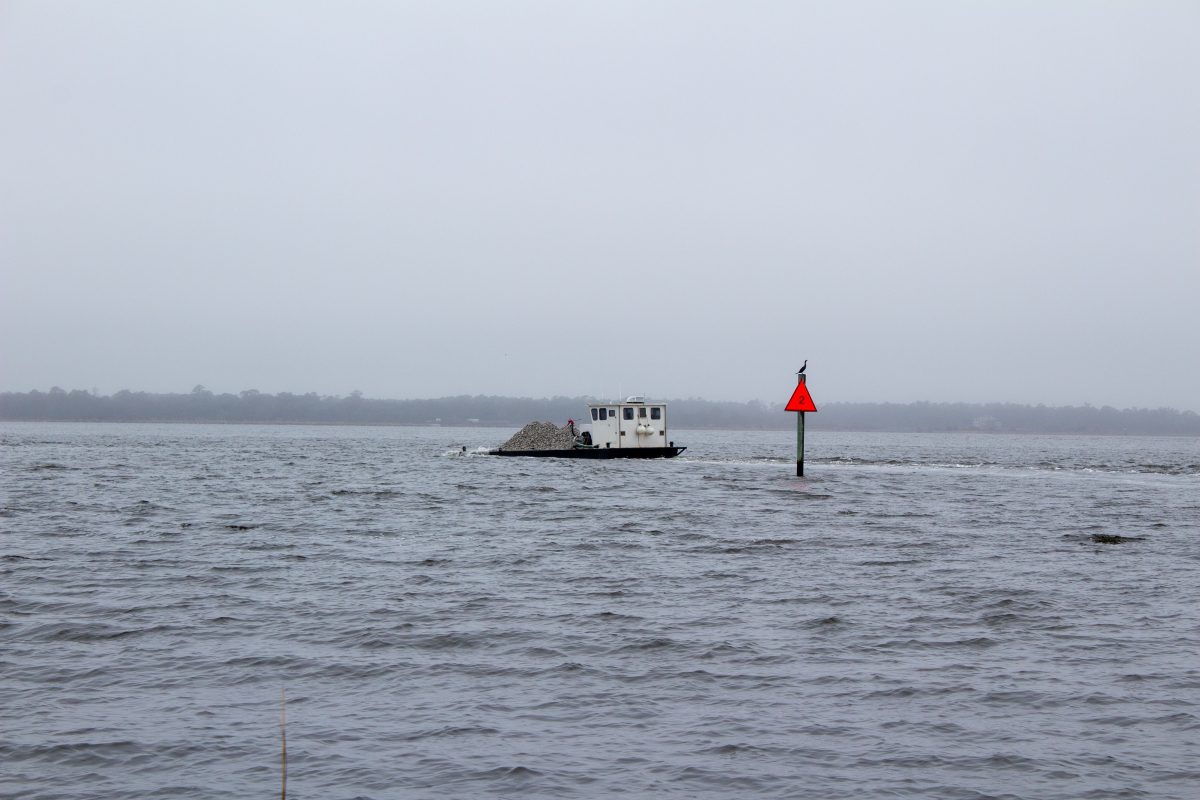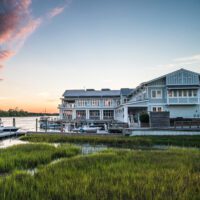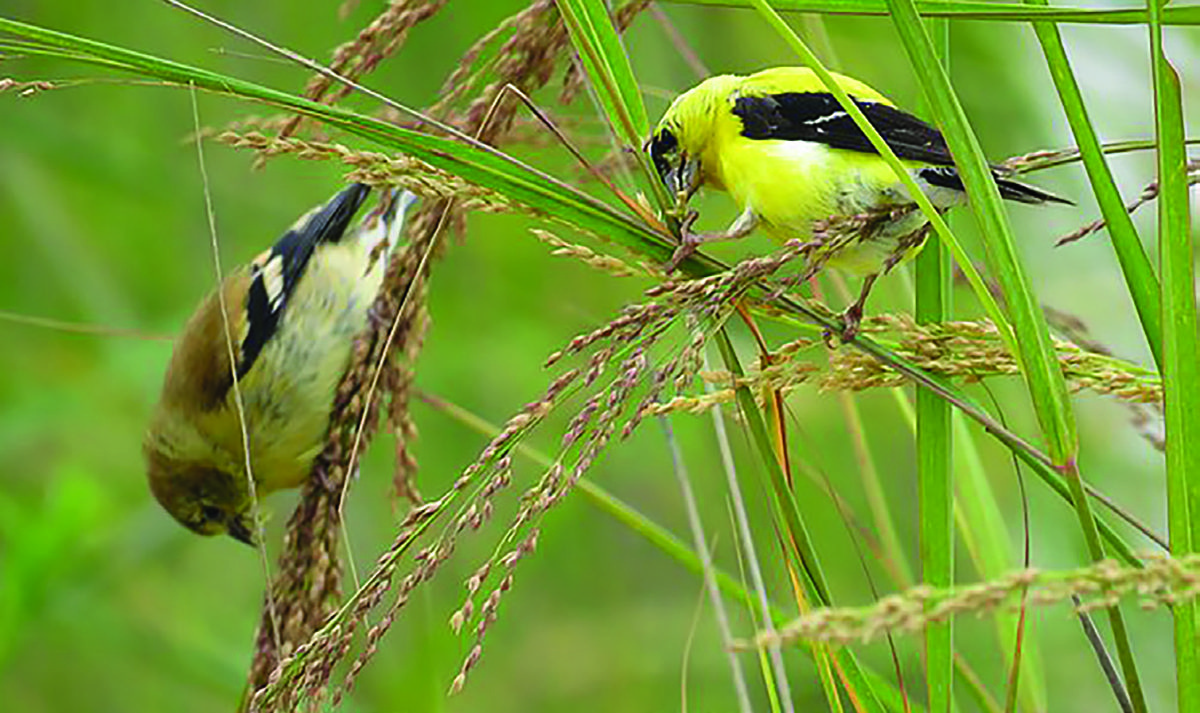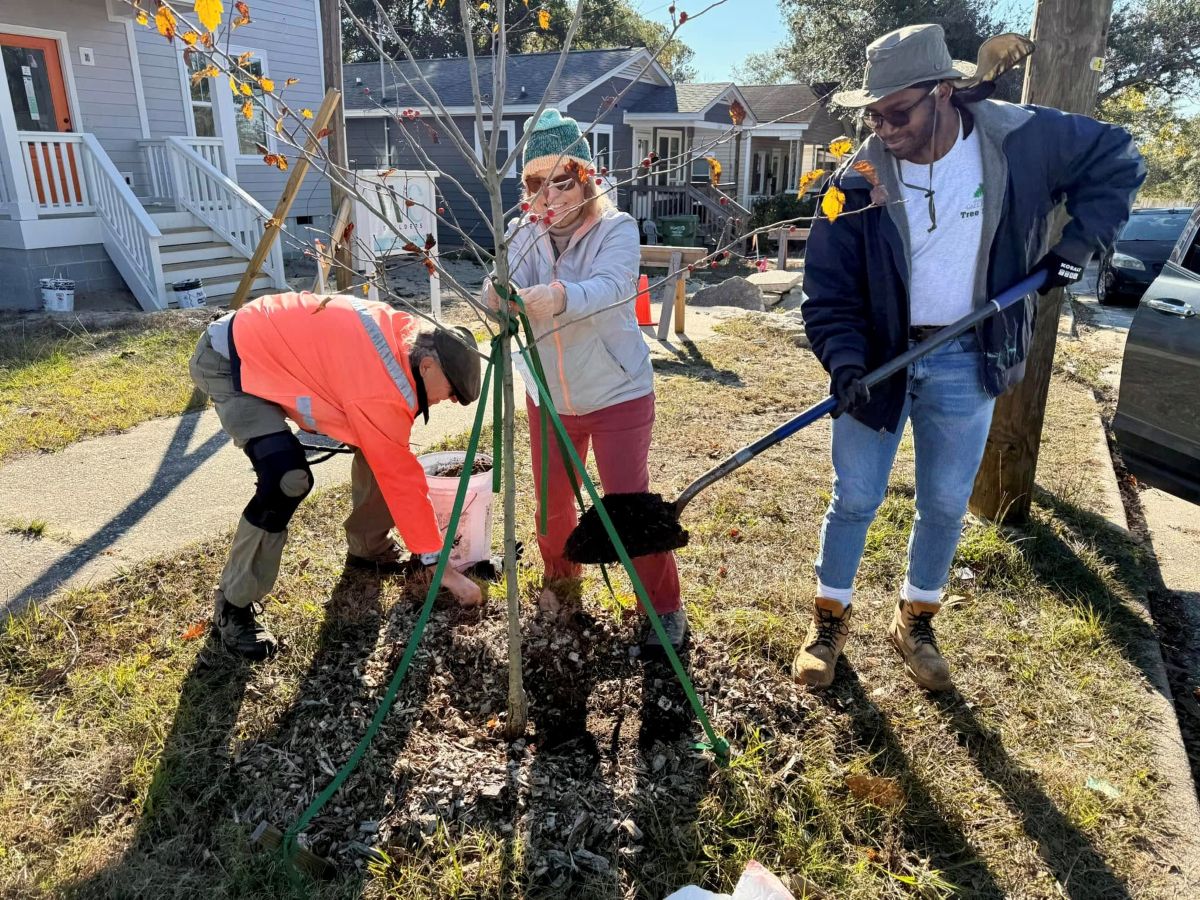
Work began this week to add 4 acres to an existing oyster and recreational fishing reef in the lower Cape Fear River near the banks of Carolina Beach State Park.
The North Carolina Coastal Federation and the North Carolina Division of Marine Fisheries are partnering on the project to expand the division’s 1-acre Artificial Reef AR-491, which was installed when the inshore reef site was established eight years ago.
Supporter Spotlight
Over the next few weeks, the division will use high-pressure water hoses attached to shallow-draft barges to deploy 2,100 tons of recycled, crushed concrete into the project area. The concrete chunks that are no bigger than a baseball will create a reef base of varying heights and be no thicker than 12 inches.
“The Cape Fear River used to be lined with extensive reefs, but it has experienced a severe decline in oyster population over the last several decades due to pollution, overfishing, deepening of the river, disease, sedimentation, and loss of habitat. The river still has a high volume of floating oyster larvae, and this artificial reef will serve as a base for them to attach to,” according to the release.
In addition to completing the artificial reef site, the project includes restoring 10 acres of wetlands in the park, installing 2,000 feet of living shorelines, and incorporating oyster reef sills and salt marsh habitat along the park’s river boundary, the nonprofit organization announced Wednesday.
“This reef site is somewhat unique in its proximity to shore, making it readily accessible to shore-based anglers or kayakers,” Jordan Byrum, Enhancement Project Manager for the division, said in a statement. “The materials placed at the site in 2017 have withstood several hurricanes and continue to support oyster populations and provide fishing opportunities during high tide. We expect this site will remain productive for anglers visiting Carolina Beach State Park.”
Officials are advising that visitors take caution near the marina where construction materials are stockpiled and moved to the barge with heavy machinery. Access to some boat slips will be limited during the project.
Supporter Spotlight
The reef is part the Oyster Pathway, a component of the Coastal Federation’s Lower Cape Fear River Blueprint, which has the goal to improve the river and surrounding watershed’s overall health and water quality.
“The completion of this reef is an important step in the implementation of the Cape Fear River Oyster Pathway,” Ted Wilgis, a coastal scientist with the nonprofit, said in a release.
The Oyster Pathway is to eventually extend downriver to Bald Head Island, connecting the remaining natural reefs with reefs constructed by Audubon North Carolina, University of North Carolina Wilmington and the Bald Head Island Conservancy.
The Division of Marine Fisheries Artificial Reef Program has been operating since the 1970s and has a total of 71 permitted artificial reefs and oyster sanctuaries within the state.
The Coastal Federation, Carolina Beach State Park and the North Carolina Division of Parks and Recreation have been working together since 2015 on projects in the park and along the shores of the lower Cape Fear River.







